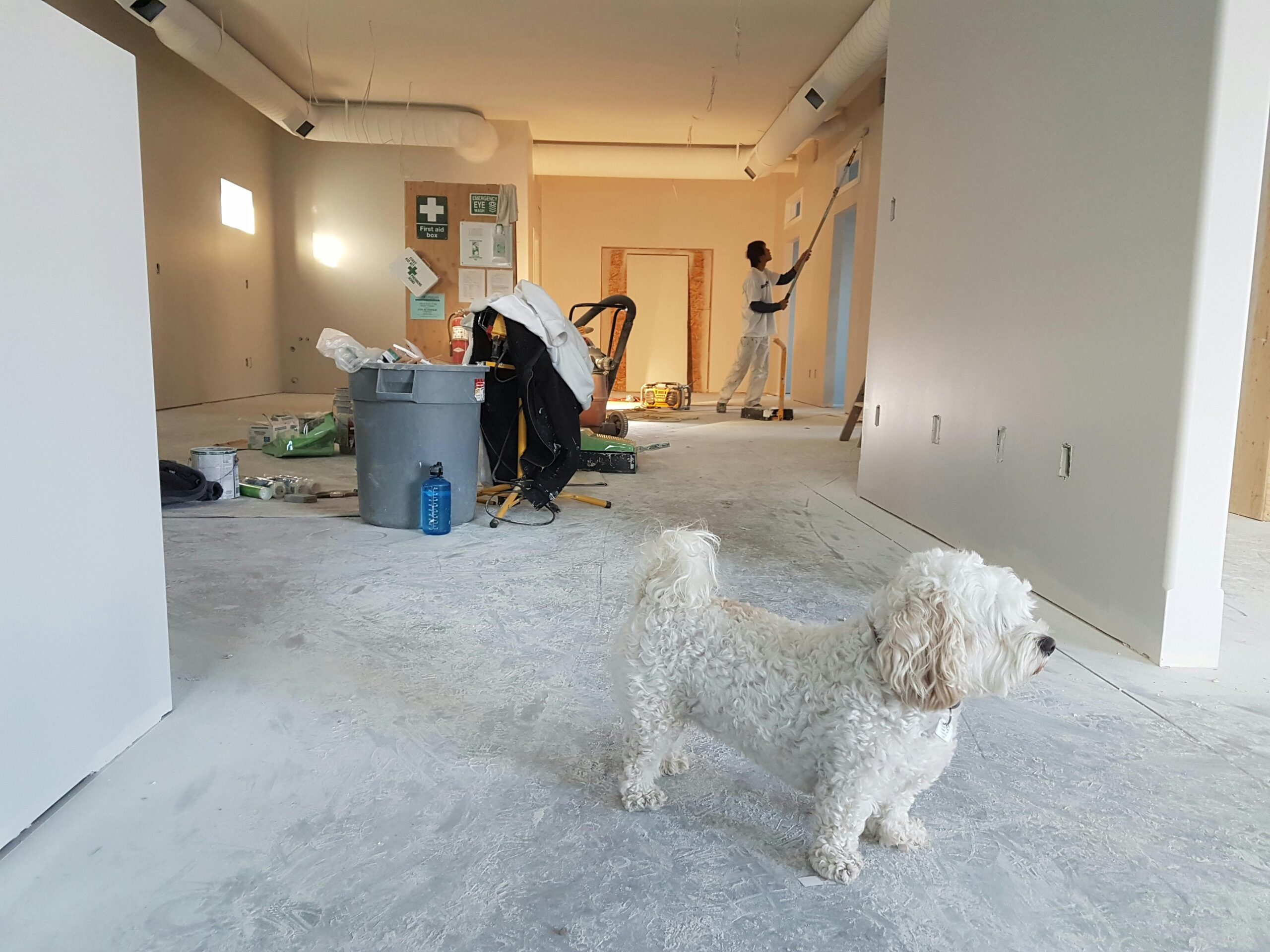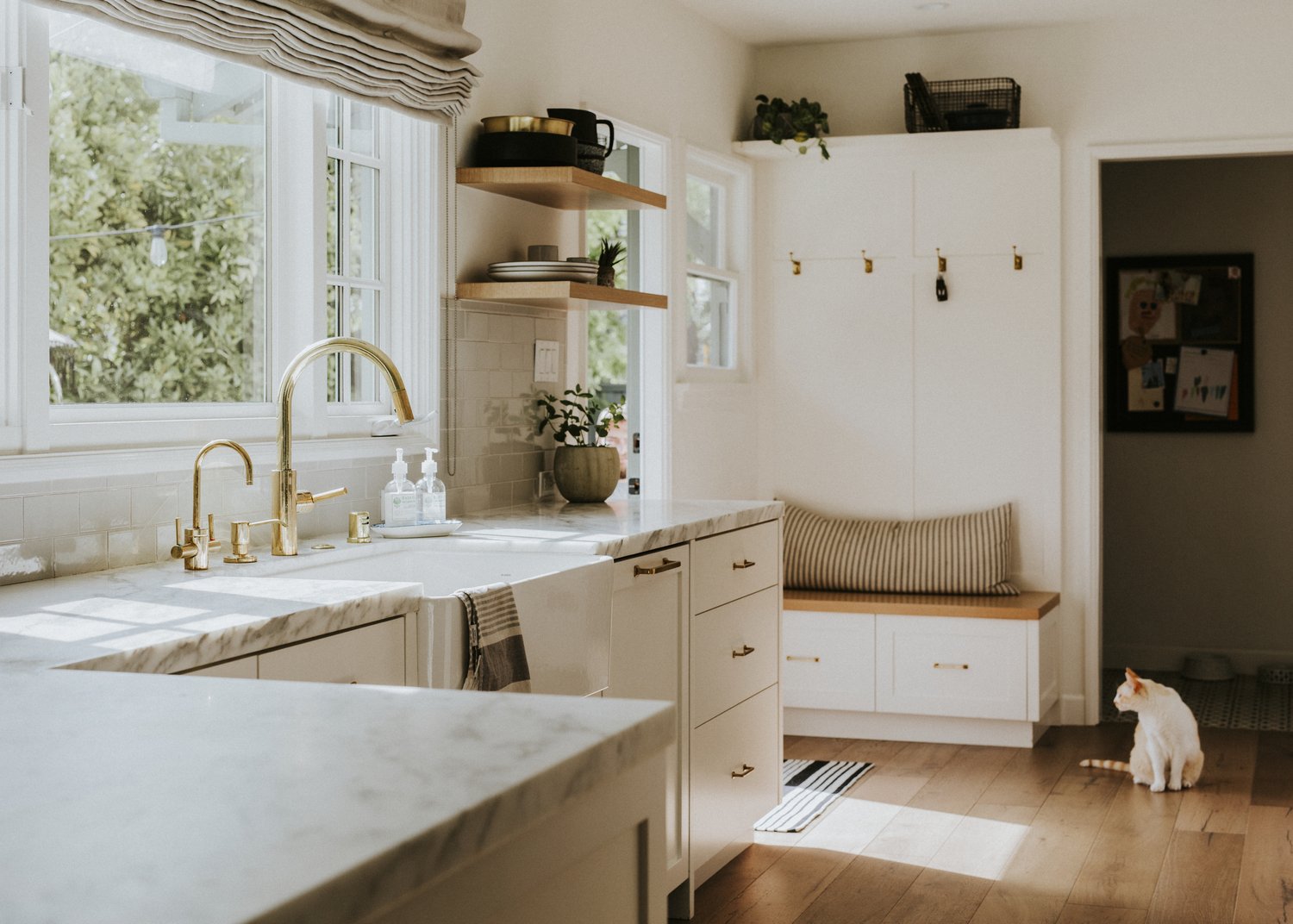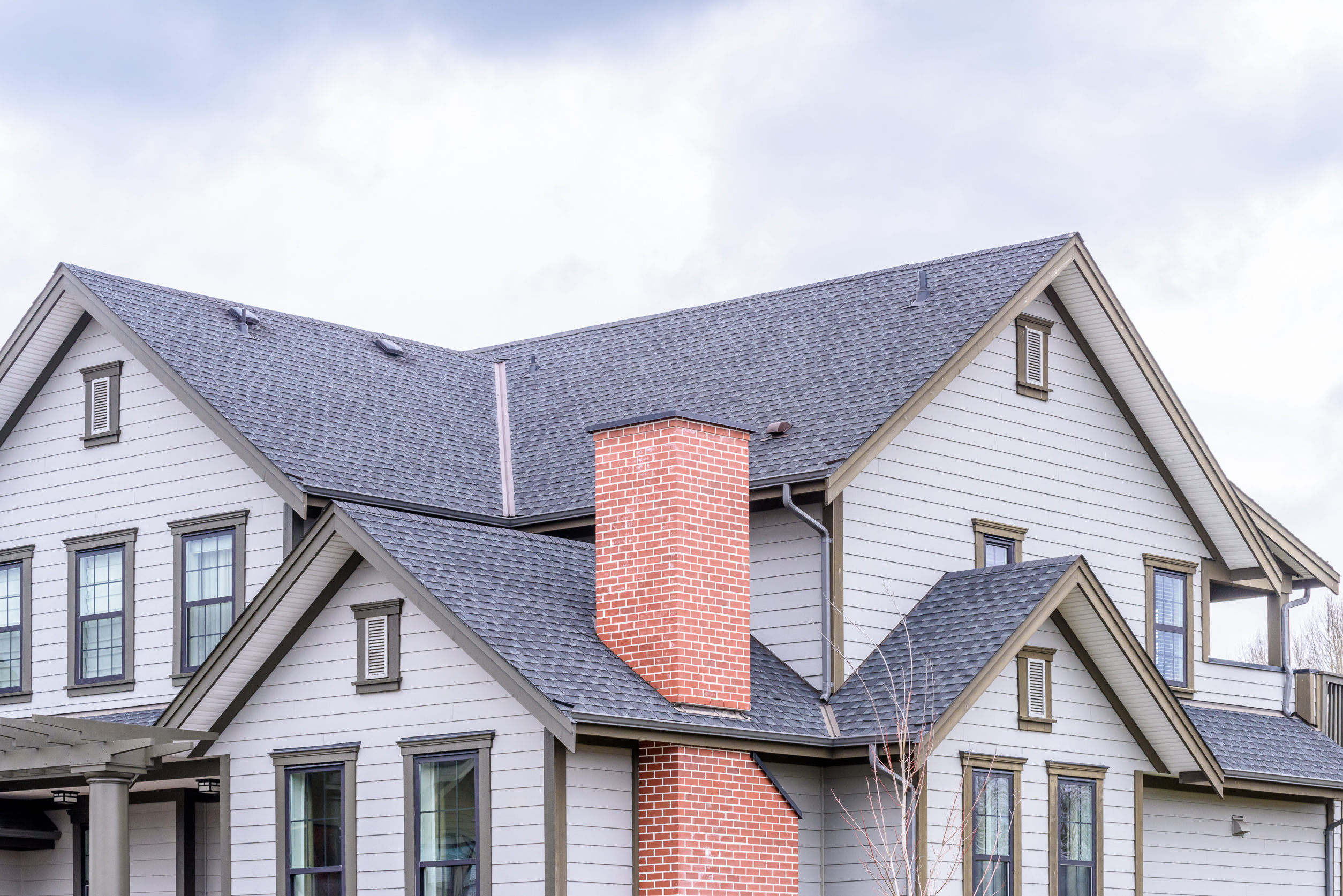Home renovations can be stressful for everyone in the household, but they can be particularly challenging for our furry friends who don’t understand what’s happening or why their environment is changing. Pets during renovation projects require special consideration to ensure they remain safe, calm, and out of harm’s way. This article offers practical advice for pet owners on how to minimize stress for dogs, cats, and other pets during home improvement projects, while also keeping the renovation on track and workers safe from unexpected animal encounters.
Understanding How Renovations Affect Pets
Renovations create unfamiliar noises, smells, and disruptions that can significantly stress your pets. Dogs may become anxious when hearing constant hammering or power tools, while cats often hide or display territorial behavior when strangers enter their space. The dust, chemical smells, and physical changes to familiar surroundings can also confuse and upset animals of all kinds. Before beginning your project, it’s important to understand these potential reactions so you can properly prepare to keep your dog calm during construction activities.
Animals operate largely on routine and familiarity, which renovations thoroughly disrupt. Some pets may exhibit behavioral changes such as decreased appetite, increased vocalization, accidents in the house, or even aggression. Recognizing these signs early allows you to adjust your management strategies before problems escalate. As experts at AskHomey often advise, preparation for your pets should be part of your initial renovation planning, not an afterthought.
Creating a Safe Haven
One of the most effective strategies for a cat safe remodel or protecting any pet during renovations is to establish a dedicated safe space away from the construction zone. This area should be in the quietest part of your home, ideally in a room that won’t be affected by the renovation. Furnish this space with your pet’s bed, favorite toys, food and water dishes, and items that carry familiar scents.
For cats, include a litter box and scratching post. For dogs, ensure they have adequate space for movement and play. This safe haven serves multiple purposes: it protects your pets from physical hazards like nails or toxic materials, reduces their anxiety by providing consistency, and prevents them from interfering with construction work. Consider using pheromone diffusers in this space to help calm nervous pets, particularly during the loudest phases of construction.
Managing Daily Routines
Maintaining as much normalcy as possible in your pet’s schedule can significantly reduce stress during renovations. Feed your pet at the same times every day, and try to keep walking or playtime consistent. If construction noise is particularly disruptive during feeding times, consider temporarily relocating meals to a quieter area of the house. For dogs that need exercise, you might need to find alternative walking routes if your usual paths are obstructed by construction equipment or materials.
If you typically leave your pet home alone during the day, consider whether this remains appropriate during the renovation. Some pets may be too stressed by construction activity to be left unsupervised. Options include arranging for a pet sitter, doggy daycare, or asking a friend to host your pet during work hours. For lengthy renovations, acclimating your dog or cat to a carrier or crate can be valuable for quick removals from the home when necessary.
Protecting Your Pet’s Health
The physical hazards of renovation extend beyond obvious dangers like tools and materials. Dust can irritate respiratory systems, paint fumes can be toxic, and even the adhesives used in flooring installation can affect sensitive animals. HEPA air purifiers can help reduce airborne particles, while ensuring proper ventilation minimizes exposure to fumes. Regular cleaning of your pet’s safe space helps remove construction dust that might otherwise be ingested during self-grooming.
Be particularly vigilant about keeping renovation materials secure. Many common items like insulation, caulk, paint, varnish, and cleaning solvents are toxic to animals if ingested. Even small items like nails, screws, or pieces of drywall can cause serious harm if swallowed. Communicate clearly with contractors about keeping work areas sealed off and materials properly stored at the end of each workday to maintain a cat safe remodel environment.
Communicating with Contractors
Inform all workers about your pets’ presence and any special concerns. Some pets may try to escape through open doors, while others might display territorial behavior toward strangers. Provide clear guidelines about keeping gates and exterior doors closed, and explain any areas that should remain off-limits to workers to prevent disturbing your pets’ safe space.
Consider posting a note on entry doors as a reminder about your pets. Most contractors are happy to accommodate reasonable requests regarding pets during renovation work, especially when you communicate these needs clearly from the beginning of the project. This mutual understanding helps ensure both worker safety and pet wellbeing throughout the renovation process.
Post-Renovation Adjustment
Once construction is complete, allow your pet to gradually acclimate to the renovated space. Use familiar objects to help them recognize that this is still their home despite the changes. Watch for signs of continued stress or unusual behavior, which might indicate they’re struggling to adjust to the new environment. Most pets will adapt to the changes within a few days to weeks, depending on their temperament and the extent of the renovation.
For more tips and to connect with reliable home service professionals, follow AskHomey on Facebook and Instagram.



